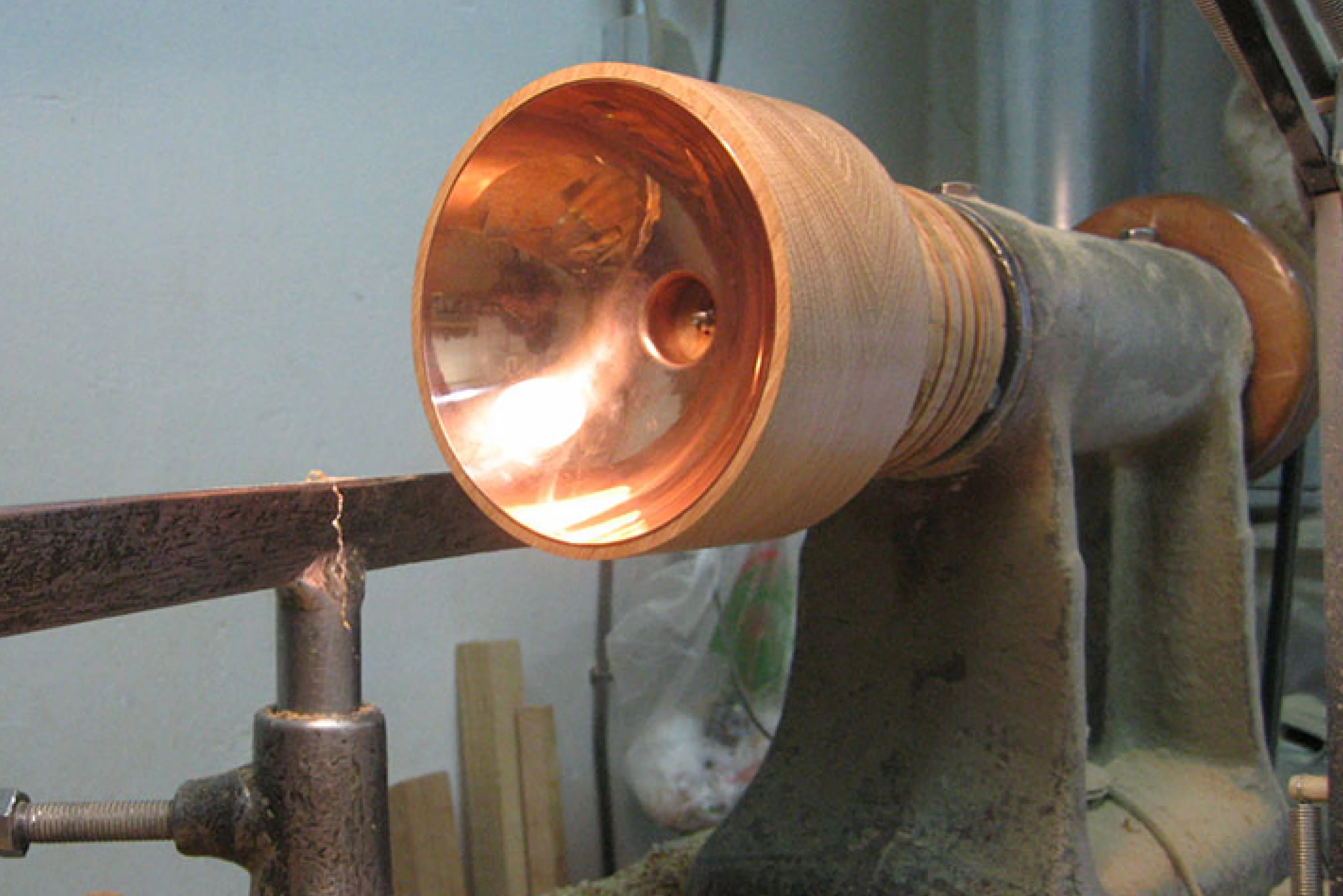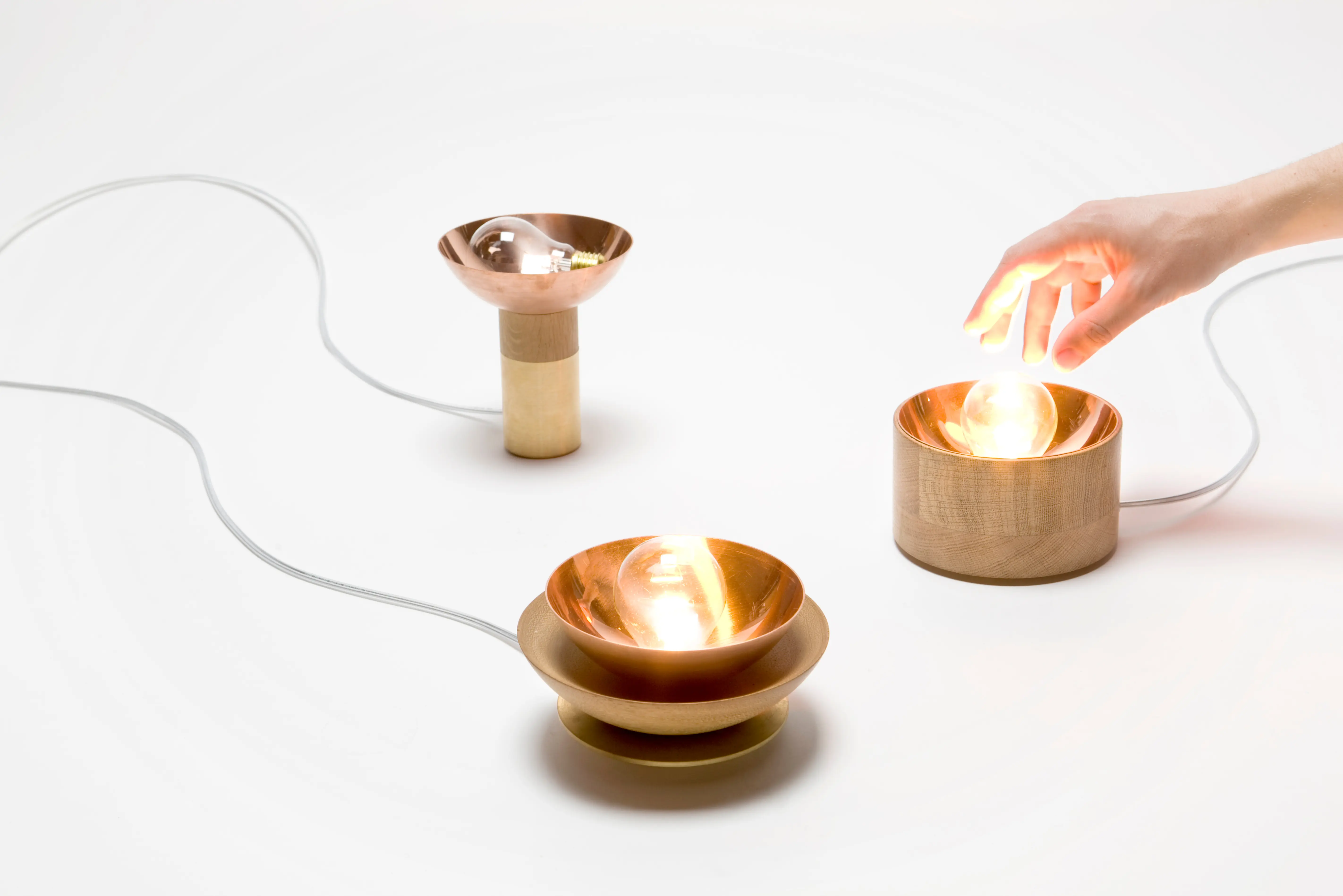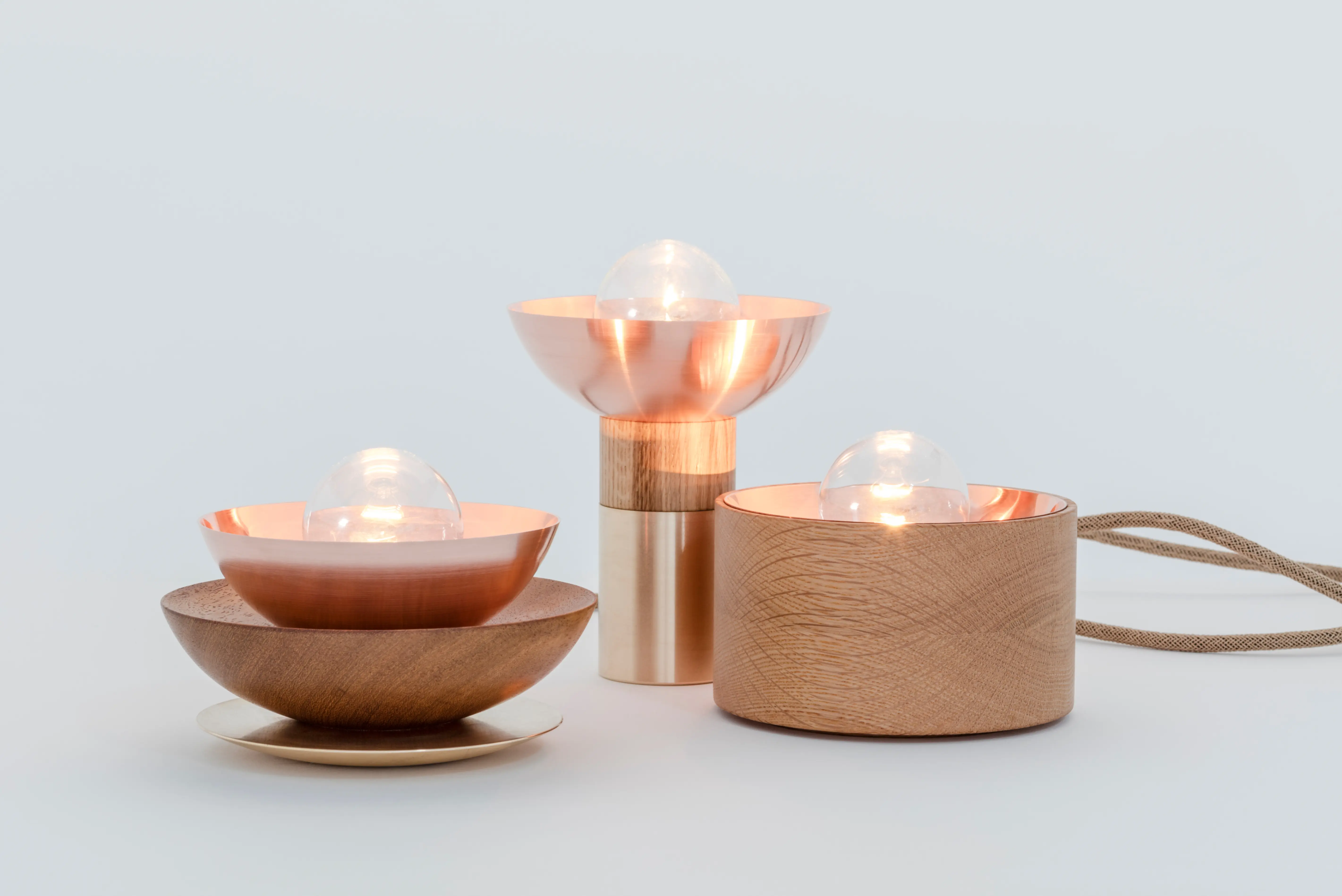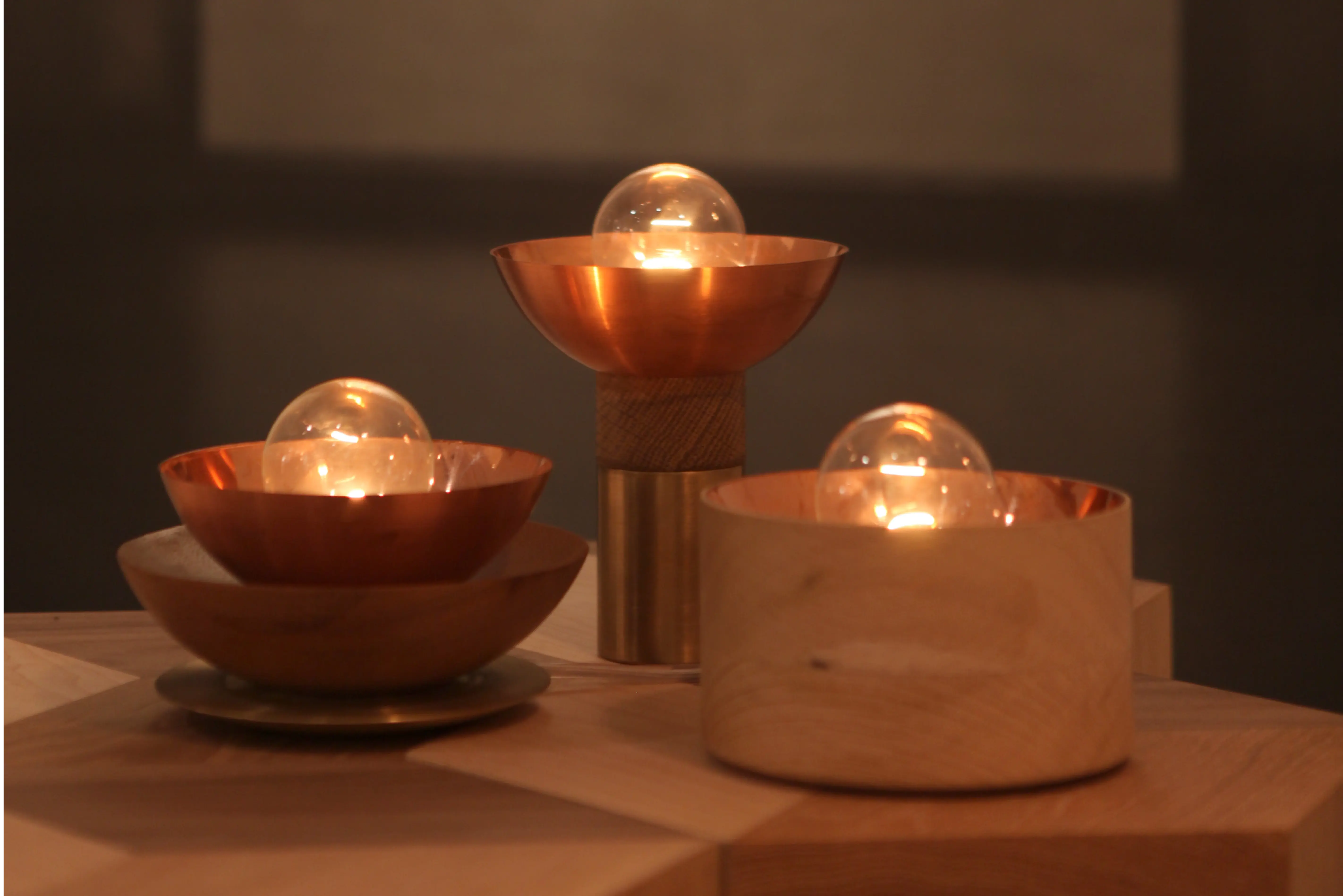
Candil
Press Release StoreCandil was conceived as a table version of candil. Apparently they are different, but their technical principle is the same: the rule of three. Therefore there are only three elements/materials that compose the lamps and allow the lighting of the bulb: copper, wood and brass.
The object itself becomes a natural extension of the electric cable. The negative pole (copper), the positive pole (brass), and the insulator (wood) play two different roles and together they become the substance and shape of the product.
Candil offers a visual and tactile experience with its natural materials and the warmth of the light that it spreads. As a modern version of a candlelight, it is meant to enchant and transport us to an intimate and pleasant atmosphere.
Our design approach is geared to ensure the highest honesty of processes and materials to deliver not just an object, but a feeling. All pieces are produced locally, using high-end industrial processes and skilled craftsmen, and assembled with great care in the studio to deliver the quality and finish we expect.


- Candil Kyoto, Madrid and Milan. Photo by Alfonso Herranz + Alicia

- Making of Candle lights. Photo by ACdO

- Making of Candle lights. Photo by ACdO

- Candil Kyoto, Madrid and Milan. Photo by Alfonso Herranz + Alicia

- Candil Kyoto, Madrid and Milan. Photo by Alfonso Herranz + Alicia

- Little corner illuminated with Candil Milan. Photo by Anette Aulestia

- Candil Kyoto, Madrid and Milan. Photo by ACdO
Candil

Candil was conceived as a table version of candil. Apparently they are different, but their technical principle is the same: the rule of three. Therefore there are only three elements/materials that compose the lamps and allow the lighting of the bulb: copper, wood and brass.
The object itself becomes a natural extension of the electric cable. The negative pole (copper), the positive pole (brass), and the insulator (wood) play two different roles and together they become the substance and shape of the product.

- Candil Kyoto, Madrid and Milan. Photo by Alfonso Herranz + Alicia

- Making of Candle lights. Photo by ACdO

- Making of Candle lights. Photo by ACdO

- Candil Kyoto, Madrid and Milan. Photo by Alfonso Herranz + Alicia

- Candil Kyoto, Madrid and Milan. Photo by Alfonso Herranz + Alicia

- Little corner illuminated with Candil Milan. Photo by Anette Aulestia

- Candil Kyoto, Madrid and Milan. Photo by ACdO
This principle is materialized in cables, bulbs, switches and most electrical components. The idea was to make the simplest possible lamp by reducing it to only these 3 elements.
Each component should cover more than one function. The mirror finished stainless steel sheet is an electrical pole, reflector and container for the bulb when not in use. The brass ring is the other electrical pole, places the bulb in the precise position and holds the lamp onto the wall. The rubber washer isolates both poles and separates the lamp from the wall.
Finally the bulb acts as a source of light and switches making the act of lighting up the space a warmer and interactive experience closer to lighting up a candle than an electrical lamp.
